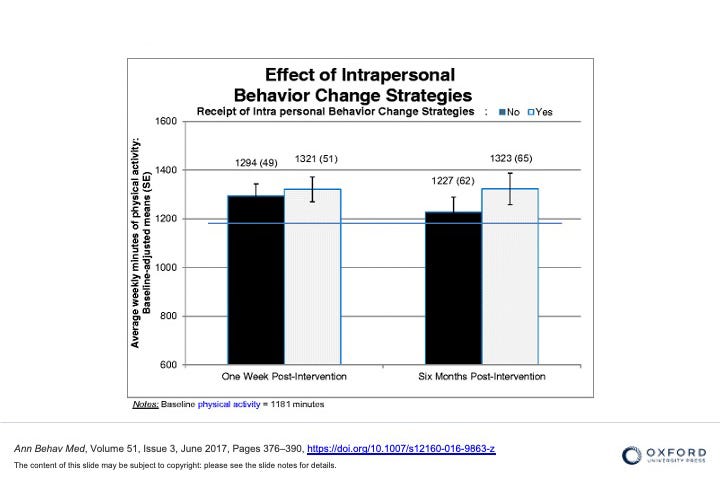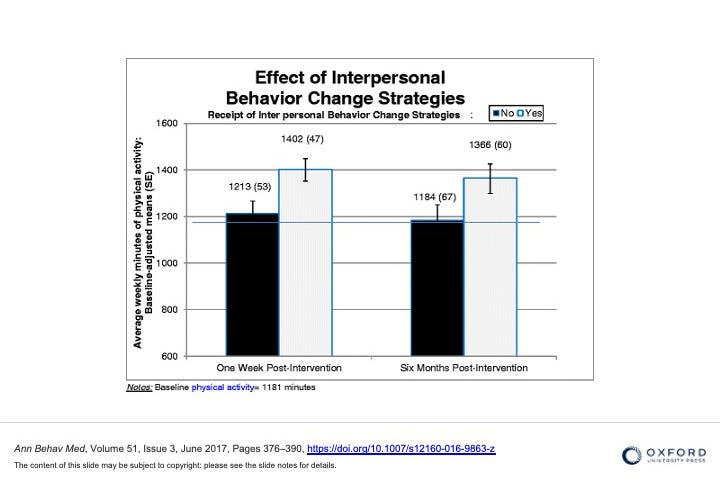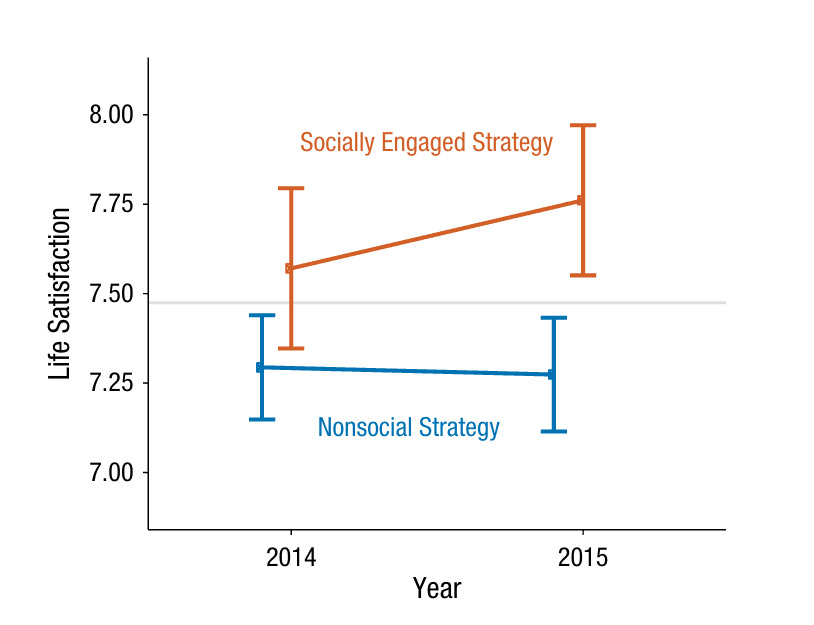What We Get Wrong About Motivation and How to Get It Right
Being other-focused is the key to reaching your goals
There is plenty of great advice out there about how to close the gap between where you are and where you want to be. Most strategies involve tapping into motivation and keeping your eye on the prize. Identify barriers. Set a goal. Problem solve. Plan ahead. Keep track. Assess progress. The emphasis is on the individual. “You can do it” and “you got this” are the battle cry of life coaches everywhere. Psychologists describe these approaches to behavior change as “intrapersonal” meaning they rely on the individual. According to this line of thinking, you alone hold the keys to your success.
A new study suggests a more powerful tool to help close the intention-action gap: other people. Interpersonal strategies–strategies that involve others–have been shown to powerfully boost willpower and motivation in a number of different contexts.
The benefits of chitchat
In a clinical trial published in Annals of Behavioral Medicine, participants starting an exercise program were divided into two groups–one that involved intrapersonal strategies and the other that involved interpersonal strategies.
Intrapersonal strategies included:
Considering personal barriers to physical activity and identifying and trying possible solutions.
Developing personal physical activity goals that were SMART (specific, measurable, attainable, relevant, and time bound).
Creating personally relevant physical activity action plans for accomplishing goals.
Self-assessing progress toward the physical activity goal and action plan implementation.
Outlining their personal daily routine and imagining possibilities for adding more physical activity.
Interpersonal strategies included:
Discussing barriers to physical activity with an assigned peer and identifying possible solutions with that person.
Comparing experiences with that other person about motivation and adherence to the physical activity program and brainstorming ways to be more compliant.
Discussing how to be a source of inspiration and role models for each other.


Those who were assigned to chit chat with a peer about their exercise program were more physically active than those who relied on self-focused strategies. Keep in mind that participants in the interpersonal group were not exercising together. The act of regularly interacting with another person to discuss the program was enough to fuel motivation. I suspect the results would have been even more powerful if participants had been assigned a partner to exercise with.
People who are “social exercisers” tend to be more physically and cognitively fit than those who go it alone. Perhaps this is because exercise is a lot more fun with another person. I love going for walks. I love it even more when I go with Fern, Beth, KK, Elizabeth, Jessica or Tory.
Social Facilitation versus Social Loafing
The tendency to make more of an effort in the presence of others is known as social facilitation theory. It explains why musicians perform better in front of an audience and college students study harder in the library than alone in their dorm room. For the most part, we try harder when we’re with others … but not always. Social loafing is the tendency to make less of an effort when working in a group. Social loafers slide by and rely on others to get things done. Remember the time when your lab partner dumped the entire assignment on you and then took all the credit? Or when everyone else on the committee slacked off and you had to do all the work? That’s social loafing in action.
One of my favorite examples of loafing:
Being specific about expectations and holding others accountable is the best way to prevent potential social loafers from actually loafing. Of course context matters–it’s a lot easier and more tempting to loaf if sitting on a large committee with a vague purpose than when playing doubles. The thing about social loafing is that it rarely feels good. Participating, contributing, and connecting are far more satisfying.
When we talk about mental health, we tend to focus on the individual and what is going on in their inner world. I worry that this message of self-focus sometimes eclipses the importance of being others-focused. There is plenty of evidence showing that the most joy and meaning we have in our lives comes from our connections with others. A study found that people who were interested in boosting their wellbeing who engaged in social pursuits such as helping others and spending more time with family and friends were happier a year later than those who committed to a non-social strategy such as stopping smoking. The study underscores the crucial role that other people play in our lives.

In a recent TED talk, the amazing Kelly Corrigan captures the essence of what gives our lives meaning. “Of all the magnificence we have beheld from cradle to grave, the most eye-popping were interpersonal.” The highlights, the magical moments, the memories that are imprinted on our hearts involve other people. With that in mind, ask yourself, “What am I going to do with someone or for someone else today?” You’ll have a better day and you’ll probably be more motivated too.
Bottom line
Put simply, depending on me, myself, and I may not be the most effective way to reach a goal. Nor is it the most fruitful path to happiness.



Fabulous insight
Connection, connection, connection.